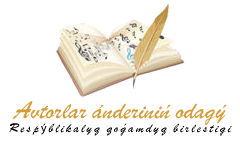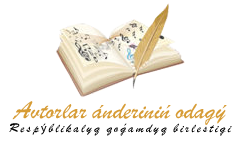Copyright registration in Kazakhstan
1) An author – an individual whose creative labour has resulted in a scientific, literary, and artistic work;
2) Copyright – author’s personal non-property and/or property rights;
3) Technical means of protection of copyright and related rights – a technical device (software and hardware) or its components that control access to works or objects of related rights, preventing or restricting actions that are not allowed by the author, owner of the related rights or other exclusive rights in relation to works or objects of related rights;
According to the current Kazakh legislation, copyright is construed as the property and personal non-property rights of the author – an individual whose creative labour has resulted in a scientific, literary, and artistic work, which is an item of intellectual property, regardless of its purpose, content and value, as well as forms of its expression.
In the Republic of Kazakhstan, copyright is governed by the Constitution of the Republic of Kazakhstan, Articles 971–984 of the Civil Code of the Republic of Kazakhstan, the Law of the Republic of Kazakhstan No. 6-1 dated June 10, 1996 “On Copyright and Related Rights” (hereinafter referred to as the Copyright Law), provisions of the Universal copyright convention (Geneva Convention) dated September 6, 1942 (Kazakhstan ratified it in 1992 by way of succession of international obligations and treaties of the former USSR), provisions of Geneva WIPO Performances and Phonograms Treaty of December 20, 1996 (Kazakhstan became a party to it by way of passing Law No. 545 and No. 546 of April 16, 2004), and a number of other regulatory legal acts of the Republic of Kazakhstan.
The Kazakh legislation on copyright is aimed at achieving the main goals and objectives; first, copyright should stimulate creation of scientific, literary, and artistic works. For these purposes, copyright creates of conditions for creative labour, provides legal recognition and protection of the achieved creative results, securing the authors’ rights to use the works created by them and earn income, etc. Secondly, copyright law creates conditions for wide use of works for public ends. In other words – enhancing copyright protection and provision for greater punitive measures for its violation should in no way hinder use of copyrighted items in everyday life.
Clause 3 of Art. 963 of the Civil Code of the Republic of Kazakhstan, which relates to the general provisions on intellectual property and applies to the chapter “Copyright”, stipulates that the right of authorship is inalienable and non-transferable and may belong only to the person whose creative labour resulted in creative content. Copyright does not cover ideas, concepts, principles, methods, systems, processes, discoveries and facts as such. If a work is created jointly by creative labour of two or more individuals, they are recognized as co-authors and have the same copyright. Unless otherwise provided by an agreement between the co-authors, each of them has the right to use, at his/her discretion, the part of the work created by him/her that has its own significance. The right to use the work in its entirety belongs to the co-authors jointly. Copyright is not recognized for legal entities. Legal entities can only be copyright holders who have received the right to use a work and/or the object of related rights under a contract with the author or on other grounds provided for by law.
In accordance with Article 972 of the Civil Code of the Republic of Kazakhstan and Article 7 of the Copyright Law, the following items may be copyrighted:
– literary works;
– dramatic and musical-dramatic works;
– scripts and scenarios;
– works of choreography and pantomime;
– musical works with or without lyrics;
– audiovisual works;
– sculptures, paintings, works of graphic art, and other works of visual arts;
– works of applied art;
– works of architecture, urban planning and landscape art;
– photographic works and works obtained by methods similar to photography;
– maps, plans, sketches, illustrations and three-dimensional works related to geography, topography and other sciences;
– computer software;
– other works.
Copyrighted items also include:
– derivative works (translations, adaptations, annotations, abstracts, summaries, reviews, dramatizations, musical arrangements and other revisions of scientific, literary, and artistic works);
– collections (encyclopedias, anthologies, databases) and other compiled works, which are the result of creative labour in terms of the selection and/or location of materials.
The fact is that authors of copyrighted items have very significant property (exclusive) and personal non-property rights to them, which are valid during their whole life and fifty years after their death. Copyright to a work, first published under a pseudonym or anonymously, lasts for fifty years, counting from January 1 of the year following the year the work was published. Upon expiration of the copyright term for a work, it becomes public domain. Works that are in the public domain can be freely used by any person without paying an author’s fee. However, the right of authorship, the right to the author’s name and droit moral survive expiration of such period, since these rights are perpetual according to paragraph 6 of Article 982 of the Civil Code of the Republic of Kazakhstan.



